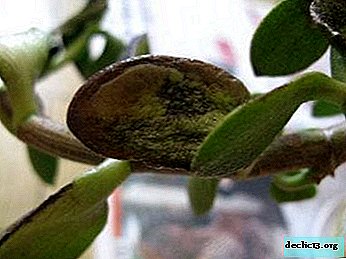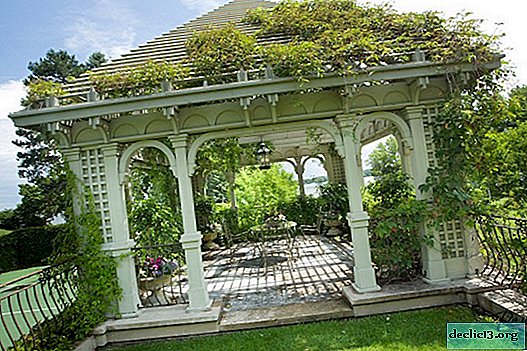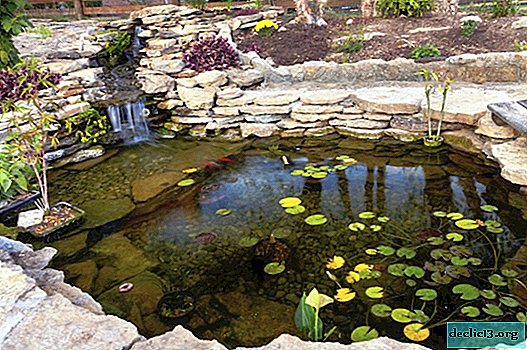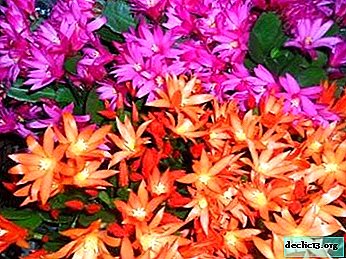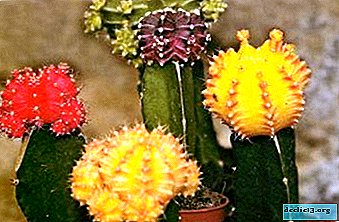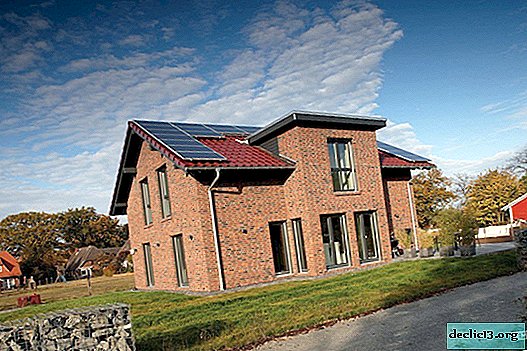How to care for azalea when it has faded: what to do next?

Flowering azaleas is a wonderful process, but not for long. As a rule, azalea blooms in winter and in the first half of spring, after which it enters a dormant period. It is very important to properly care for the flowered plant in order to see beautiful flowers again and again, from the fact that there are no more flowers, azalea will not become more unpretentious, rather, on the contrary. She has more and more needs, not satisfying which the plant may completely die. How to care for azalea after flowering? What to do if it has faded and dropped leaves or dried up? What mistakes do flower growers make and how to fix them? Read on ...
Plant life cycle
The life cycle of azaleas is strongly tied to the seasons. Early varieties bloom from December to April, medium late - from January to March, late - from February to April. You can find out more about how many times a year and when the azalea blooms here. And after flowering ends, the question arises: what to do next at home? First you need to decide what can be considered the completion of flowering? A sign of the end of flowering is the drying and dumping of flowers. Some varieties also drop leaves.
Important! If the variety does not provide for the dumping of leaves, but this still happens, this is a cause for concern. Perhaps your pet is sick.Step-by-step instructions: what to do next when the rhododendron fades?
Cutting, removing dried flowers
 At the end of flowering, the azalea must be cut. This is necessary in order to ensure her subsequent flowering. When pruning, young shoots should be removed, the overgrown branches should be cut so that three or four leaves remain on it. If the azalea has grown and it can be thinned. If desired, you can form a crown of any shape.
At the end of flowering, the azalea must be cut. This is necessary in order to ensure her subsequent flowering. When pruning, young shoots should be removed, the overgrown branches should be cut so that three or four leaves remain on it. If the azalea has grown and it can be thinned. If desired, you can form a crown of any shape.
What to do with faded flowers? If dry flowers remain on the plant, then they should also be cut with peduncles. And cut the elongated branches. Pruning is done carefully so as not to injure the plant. This procedure is carried out using a sterile secateurs in approximately March or April, after flowering has ended.
Trimming is needed for:
- The formation of the bush.
- Future flowering.
- Beautiful appearance.
- The formation of a lush crown in the future.
After pruning the azalea, you should put a dark and cool place for about 2 months. Thus, you provide her with a period of rest. The plant during this time will be able to rest and restore strength.
Also, after flowering, pinching is very important, that is, removing the growth point of a young shoot. Pinching is best done 3 times a year. Thanks to her, the crown of the plant will look beautiful and magnificent, and it will also contribute to budding. Pruning and pinching are very important for future flowering, its intensity depends on this.
Attention! Before pruning, pruning shears must be sanitized to prevent infection on the plant. Slicing areas should be proizensed with a special paste.Watch the video on the topic "Is it worth cutting the azalea after flowering?":
Temperature, humidity, lighting
Azalea is very moody regarding air temperature. After flowering, and this is usually in the spring, she needs to provide a cool temperature. The optimum temperature is 12 - 16 degrees. At the same time, it is imperative to maintain high humidity. Ideally, humidity should be as high as 70%. To do this, you can use an air humidifier, as well as regularly spray the plant. After flowering, the azalea is better to put a dark place. A shaded room or other place with minimal lighting is quite suitable for her.
Watering and feeding
 Water the azalea with cool water. It is best to use melt water. As well as it is desirable to spray a flower. For irrigation, it is also possible to use rain or settled tap water (in extreme cases). It is advisable to acidify the water for irrigation to maintain the desired level of acidity. To do this, add several crystals of citric acid to the water.
Water the azalea with cool water. It is best to use melt water. As well as it is desirable to spray a flower. For irrigation, it is also possible to use rain or settled tap water (in extreme cases). It is advisable to acidify the water for irrigation to maintain the desired level of acidity. To do this, add several crystals of citric acid to the water.
Water should be cool, but not icy. The optimum temperature is 16-17 degrees. Fertilize the azalea after flowering (in spring) should be done at least once a week. For this, fertilizers designed specifically for azaleas are used:
- Ammonium sulfate.
- Superphosphate.
- Potassium sulfide.
After flowering, use fertilizer containing nitrogen., for example, "Uniflor - micro." This fertilizer contributes to:
- Vegetation.
- Active growth.
- Recovery.
Watch the video on the topic “Correct watering of azaleas so that leaves are not dropped”:
Transfer
The period after flowering is most favorable for transplantation. Since in this case the load on the plant will be minimal. He will have time and opportunity to restore strength. First you need to choose the soil. You can cook it yourself, but it’s best to buy it in a store.
If you decide to prepare the soil yourself for this you need:
- One piece of leafy land.
- Two parts of coniferous land.
- One piece of heather land.
- One piece of peat land.
All this should be mixed in a container, then add river sand as a baking powder. You need to put drainage in the pot. After the soil and the pot are prepared, the plant must be removed from the old pot and placed in a container with water for about 30 minutes.
 About 1/3 of the earth should be washed away from the roots. Then you need to inspect the roots. If you find rotten, diseased, dark roots, they should be removed with a sterile tool. Then the plant is lowered into the prepared pot and filled with fresh soil. In no case should you fill the root of the neck.
About 1/3 of the earth should be washed away from the roots. Then you need to inspect the roots. If you find rotten, diseased, dark roots, they should be removed with a sterile tool. Then the plant is lowered into the prepared pot and filled with fresh soil. In no case should you fill the root of the neck.
After transplanting, the flower should be watered with a solution for root growth. After a transplant for two months, azalea is not fed in order not to burn out the roots and not increase the load on the root system.
Watch the video on the topic "How to transplant azalea correctly":
Possible errors and their consequences
When caring for azalea, mistakes cannot be avoided.
It could be:
- Unsuitable soil. The plant will not receive the necessary substances.
- Not a sterile instrument. May lead to azalea infection by pathogenic flora.
- Damage to the roots. Deadly and should be avoided as much as possible.
- Lack of pruning and pinching. Affects the appearance of azaleas, but is not dangerous.
- Insufficient air humidity. May cause drying and cause some illnesses.
- Top dressing and stimulation immediately after flowering. May cause damage to the roots and result in death.
- Watering with inappropriate water. It is fraught with infections.
- Overfeeding or complete lack of feeding. Both can ruin the azalea.
Each of these errors can lead to serious plant disease or even death.
Also, improper care, pests and other reasons can contribute to the fact that the plant does not bloom. More information about why azalea does not bloom can be found here.
How to care for a rhododendron in a pot in case of problems?
How to save a plant if it dries?
The reasons for the drying of the plant can be:
- Lack of moisture.
- Too high air temperature.
- Direct Sun Rays.
- Pest damage.
- Damage to the root system.
- Lack of nutrition.
- Lack of light.
- Stress.
- Transplanting during flowering.
- Wrong watering.
Why drops leaves and how to help?
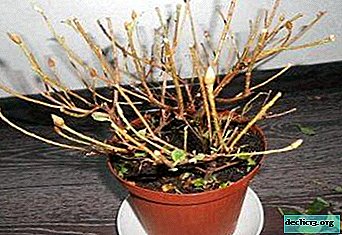 Leaf dumping most often occurs due to inappropriate humidity. To avoid this, the plant should be sprayed. From time to time, you can put the azalea in a basin with water for several minutes so that the roots can absorb moisture. This is a good drying prevention.
Leaf dumping most often occurs due to inappropriate humidity. To avoid this, the plant should be sprayed. From time to time, you can put the azalea in a basin with water for several minutes so that the roots can absorb moisture. This is a good drying prevention.- Another reason for leaf dropping is insufficient acidity of the soil, as well as an increased content of calcium in it.
- Also, pests can affect azalea. This can lead to yellowing, deformation, and leaf dropping. If the leaves are covered with spots or sticky coating, the plant may be affected by a scale. It must be urgently isolated from other colors and treated with insecticidal drugs.
- Wrong watering may cause leaf dropping. If the azalea receives excessive watering and moisture is retained in the soil, this can lead to damage and decay of the roots. Which means it will certainly affect the crown. Sometimes tap water causes problems. In order to avoid this, use melt protected water.
When caring for azalea - the main thing is not to overdo it. It should be remembered that flowering is a burden. So you need to provide the plant with maximum peace and the ability to recover. In no case should you feed and stimulate growth immediately after flowering! Darkness, coolness, moisture - these are the main friends of the azalea after flowering.

 Leaf dumping most often occurs due to inappropriate humidity. To avoid this, the plant should be sprayed. From time to time, you can put the azalea in a basin with water for several minutes so that the roots can absorb moisture. This is a good drying prevention.
Leaf dumping most often occurs due to inappropriate humidity. To avoid this, the plant should be sprayed. From time to time, you can put the azalea in a basin with water for several minutes so that the roots can absorb moisture. This is a good drying prevention.


